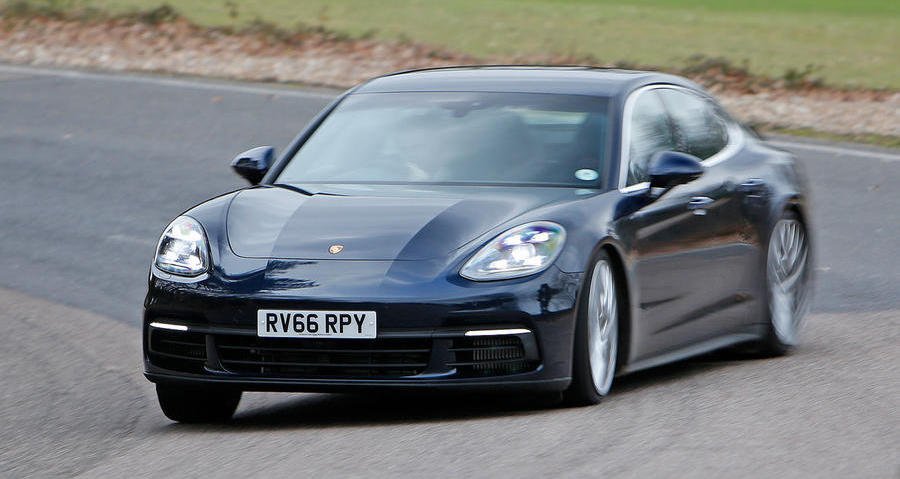The first-generation Panamera was launched in 2010 and this magazine wasn’t wholly persuaded by the new arrival. Fortunately, it matured nicely throughout its six-year run but it took its successor, the second-generation Panamera under the spotlight here, to change hearts and minds.
How? It looks much better for a start. There’s definitely a hint of stretched 911 going on. (It’s longer, wider and lower than before.) It’s still a four-seater but that rear cabin looks special as a result. It offers plenty of space for average-sized adults, although a six-footer might feel a little cramped. If space is important, try out the slightly longer Executive version or go the whole hog and get the Sport Turismo shooting brake (to be covered in a future guide).
The engines have also stepped up, being powerful, refined and free-revving. The bargain in the line-up is the entry-level 330bhp 3.0-litre. It’s followed by our favourite, the 434bhp 2.9-litre twin-turbo V6. Then there’s the 456bhp 2.9-litre V6 E-Hybrid (lots available from £48,000 for a 2017- reg with 54,000 miles) and the 453bhp 4.0-litre twin-turbo V8 GTS. This last model, launched in 2019, doesn’t play to the Panamera’s strengths because its ride is a bit too stiff for a luxury car. At the top of the line-up are the 543bhp 4.0-litre V8 Turbo and the towering 670bhp 4.0-litre twin-turbo S E-Hybrid.
The only diesel is the 416bhp twin-turbo 4.0-litre unit in the 4S Diesel – at launch, the fastest production diesel car in the world. Autocar was so impressed that it awarded it five stars. However, the rise in popularity of hybrids consigned the diesel to an early grave in 2018 and there are only a few for sale. Pay around £55,000 for a 2017-reg with 70,000 miles.
That’s a lot of engines to choose from and it only gets harder, because from 2021, when the Panamera was facelifted, the 2.9 and 4.0 regular and hybrid engines were all uprated.
The number ‘4’ in the model name, as in Panamera 4, means it’s four-wheel drive, a feature that gives a powerful Panamera extra security in slippery conditions. Some versions, such as the Turbo and GTS, have the system as standard.
All Panameras have an automatic gearbox, climate control, leather seats, LED headlights and a 12.3in touchscreen with sat-nav. But few Porsche buyers stop there, so when browsing the classifieds, be sure you understand which extras the car has and be wary of paying a premium for the more personal ones, such as special finishes and colour schemes. On that last point, the Panamera is a big car so choose its colour wisely. The few genuinely desirable extras include the Sport Chrono package (it reduces the 0-62mph time slightly) but the most desirable of all is full Porsche service history. Don’t buy a used Panamera without it.
Need to know
Four-wheel steering is an option. The touchscreen infotainment can be a pain to use on the move. Panameras registered since 2017 are subject to additional road tax. It’s a big car, so check the body and wheels for urban scrapes. It’s strictly a two-seater in the back. With the seats upright, the boot is 495 litres, but with them folded down, it expands to 1304 litres. However, the sloping roof rules out carrying bulky loads. Hybrid 2.9 and 4.0 petrols offer promise of electric-only running. Look out for cars fitted with the £4869 optional Burmester sound system.
Our pick
Panamera 2.9 V6 4S PDK: This engine produces 434bhp and, in combination with four-wheel drive, is about the only Panamera you need. Prices start at around £55k for a 2017-reg with 30,000 miles and full Porsche service history.
Wild card
Panamera Turbo S: With 621bhp, this variant gives little away to the competition, while being better to drive than most. Not naughty in the pure GT sense – it’s too mature for that – but very nice.
Related News

